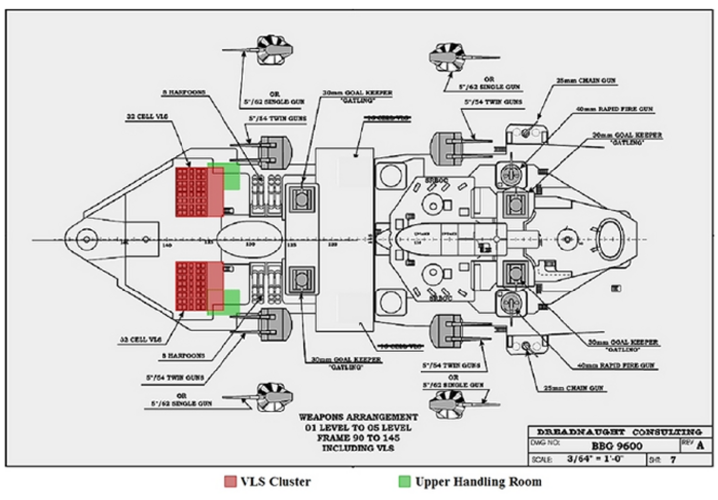- Joined
- 1 February 2011
- Messages
- 2,840
- Reaction score
- 3,250
My friend provided me information on a plan which aimed to further modernize the Iowas after the First Gulf War in the mid 1990's!
Here is what he provided me:
Here is what he provided me:
Warship Improvement Plan (FY1993-1996)
Mk-41 VLS:
Replacement of Mk-143 Tomahawk ABLs with 96 Mk-41 Mod 1 vertical launch cells. They would have been arranged in 2 x 16 clusters amidships and 2 x 32 aft. Both structures would have been raised by about 1 deck to accommodate the lengths of the tubes. HY-80 would have been used to raise the decks and protect the VLS cells.
5"/54 caliber guns:
NAVSEA sent the plans for the Montana-class twin 5"/54caliber manually operated guns to the Iowa-class Program Managers at Long Beach Naval Shipyard and to Crane Indiana for construction. They would have been manually operated just like the 5"/38s. While the upper handling rooms would have remained in the same place, the base rings would have been moved outboard by 1' to add a greater walking clearance and clearance for the spent casings to accumulate between the back of the mount (when faced outboard) and the super structure. Mts 53, 54, 57, and 58 would have been replaced with the new mounts, providing the ship with 4 5"/54caliber guns per side and 8 total.
NATO Sea Sparrow Missile Upgrade:
Mts 51 and 52 would have been replaced by Mk-29 eight-cell NATO Sea Sparrow missile launchers. The launchers would have been on top of the upper handling rooms. The decks would have been extended all the way to the rail of the ship (platforms built over the main deck and the O-2 level) to provide a place to load the missiles into the launcher. The barrels of the 5"/54 caliber guns would have been 2' (I believe) over the tops of the platforms when trained forward.
There would have been 4 Mk-95 "bug eye" illuminators. Two would have been in place of the port and starboard Mk-37 secondary battery directors. The other two would have been on either side of the after main battery director providing 2 per side.
Radar:
The SPS-49 would have remained where it is, and there would not have been a SPS-48. A main mast would have been built for the TAS-23 radar for the Sea Sparrows.
Aircraft:
A removable hangar would have been built for the Pioneer RPVs and placed just aft of the spillway behind Turret 3. Its roof would have been 1' under the barrels of Turret 3.
Fire Control:
The main battery would have received a Mk-160 Mod 5 GFCS to manage the direction of 16" long range rounds (11" and 13" discarding sabot, and RAP). I do not have any information on what kind of GFCS they would have had for the new 5"/54 guns. To my knowledge, they would have had to get a new one, because the existing one is only good for 5"/38 caliber gun ranges and ballistics.And such I've made a line drawing based on these aspects:








